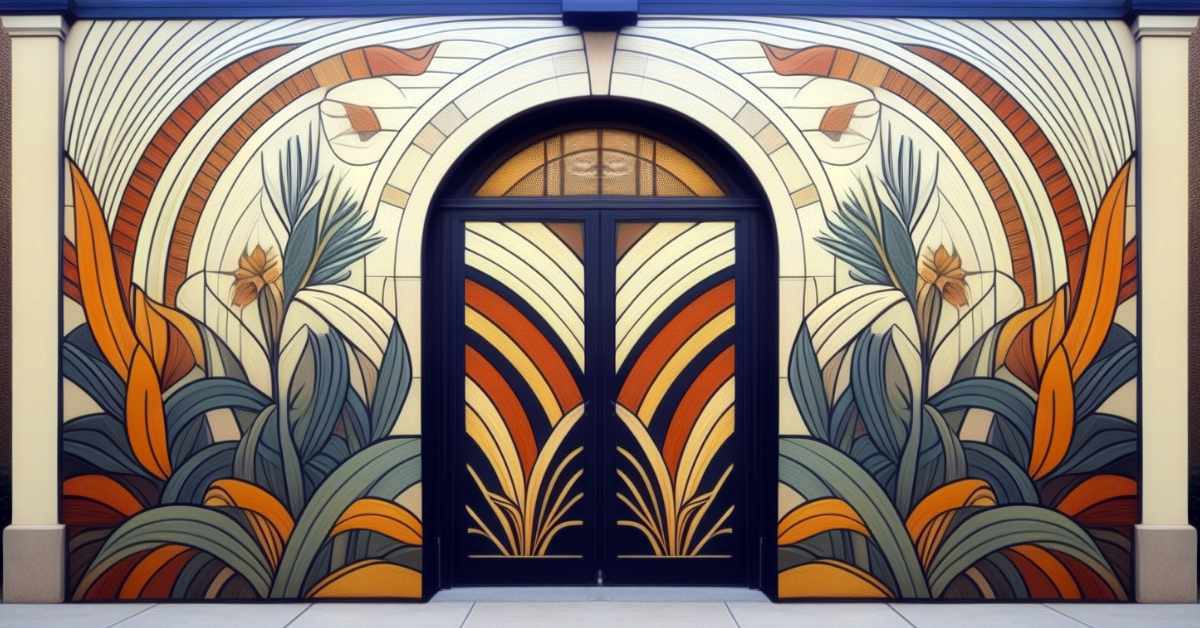The Timeless Elegance of Art Deco: A Personal Favorite

As a digital artist and graphic designer, I find myself continually inspired by various artistic movements, but one that stands out as a favorite is the Art Deco era. The allure of Art Deco lays in its distinctive blend of luxury, modernity, and meticulous craftsmanship. Let’s dive into the rich history of this fascinating movement and explore how we can incorporate its elements into contemporary art and design projects.
A Brief History of Art Deco
Art Deco emerged in the 1920s and 1930s, a time of significant social and cultural change. Originating in France, the movement quickly spread across Europe and the United States, influencing architecture, fashion, art, and design. The term “Art Deco” was derived from the Exposition Internationale des Arts Décoratifs et Industriels Modernes held in Paris in 1925, where the style was first showcased.
Characterized by its bold geometric patterns, lavish ornamentation, and use of modern materials such as chrome, glass, and steel, Art Deco was a departure from the flowing lines of Art Nouveau. It embraced the spirit of the Machine Age, celebrating technological progress and the opulence of the Roaring Twenties. The Chrysler Building in New York City, with its iconic spire, and the luxurious interiors of the Queen Mary ship are quintessential examples of Art Deco design.
Why I Love Art Deco
Art Deco is one of my favorite design styles because it beautifully blends simplicity and grandeur. The style offers a lot of variety, ranging from simple design elements to complex geometric patterns. This versatility greatly influences my pattern designs, as I love working with geometric patterns and symmetry.
Incorporating Art Deco Elements into Modern Projects
Bringing Art Deco into contemporary art and design projects can add a touch of classic elegance and modern sophistication. Here are some ideas to help you integrate this beloved style into your work:
1. Geometric Patterns
One of the hallmarks of Art Deco is its use of geometric patterns. Incorporate bold, repeating motifs such as chevrons, zigzags, and sunbursts into your designs. These patterns can be applied to everything from textiles and wallpapers to digital backgrounds and branding materials.
2. Luxurious Materials
Art Deco design often features materials that convey luxury and opulence. Consider using metallic finishes like gold, silver, and bronze in your projects. Glossy black surfaces, mirrored elements, and inlaid wood can also evoke the richness of the Art Deco era.
3. Bold Colour Palettes
Embrace the bold and vibrant colour schemes typical of Art Deco. Rich jewel tones like emerald green, sapphire blue, and ruby red, paired with sleek blacks and metallics, can create striking visual contrasts. These colour combinations work beautifully in everything from graphic design to interior decor.
4. Streamlined Forms
The sleek, streamlined forms of Art Deco can bring a modern touch to your projects. Incorporate clean lines and smooth curves to create a sense of movement and dynamism. This approach works particularly well in furniture design, product packaging, and digital interfaces.
5. Ornate Detailing
Don’t shy away from intricate detailing. Art Deco is known for its lavish ornamentation, so adding decorative elements like intricate borders, stylized floral motifs, and elaborate typography can enhance the sophistication of your designs.
Bringing Timeless Elegance into the Modern World
Art Deco remains a timeless source of inspiration for artists and designers, offering a perfect blend of elegance and modernity. By incorporating its distinctive elements into our contemporary projects, we can pay homage to this beloved artistic movement and infuse our work with its enduring charm.
Whether you’re designing a new logo, redecorating a space, or creating a digital artwork, let the spirit of Art Deco guide you. Its geometric patterns, luxurious materials, bold color palettes, streamlined forms, and ornate detailing can transform any project into a masterpiece of timeless elegance.
Do you have a favorite Art Deco-inspired project or idea? I’d love to hear about it in the comments below!






0 Comments